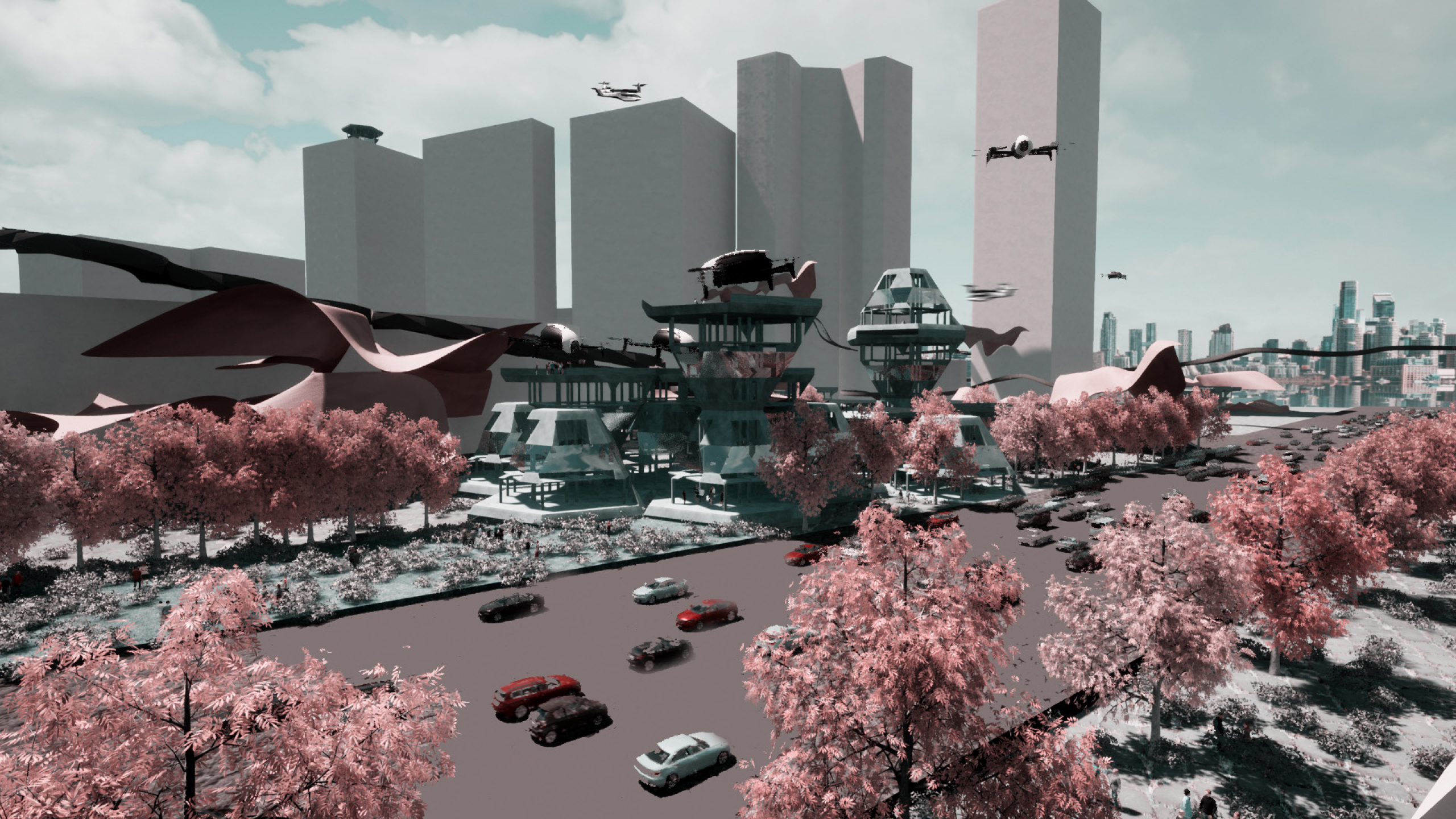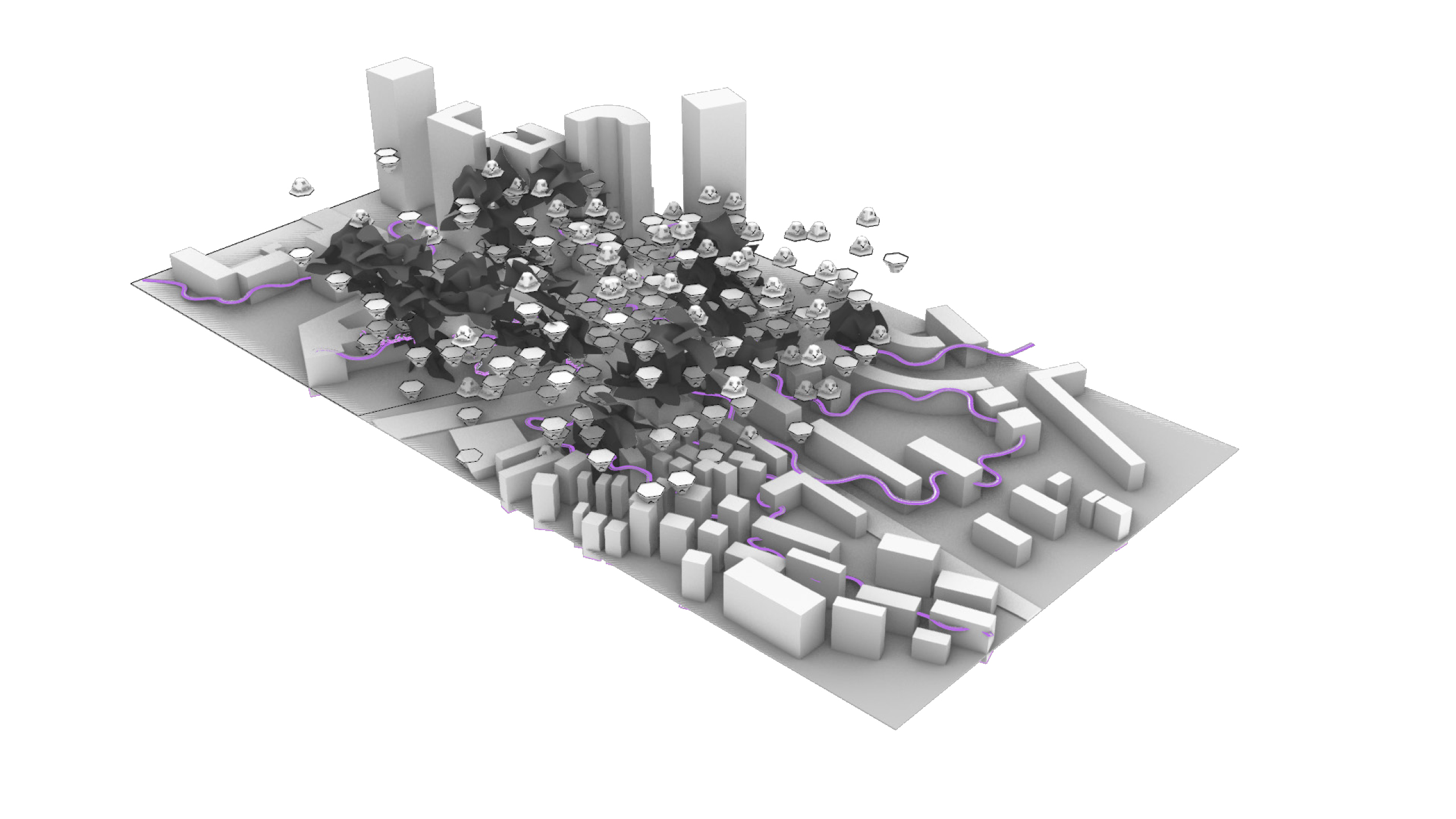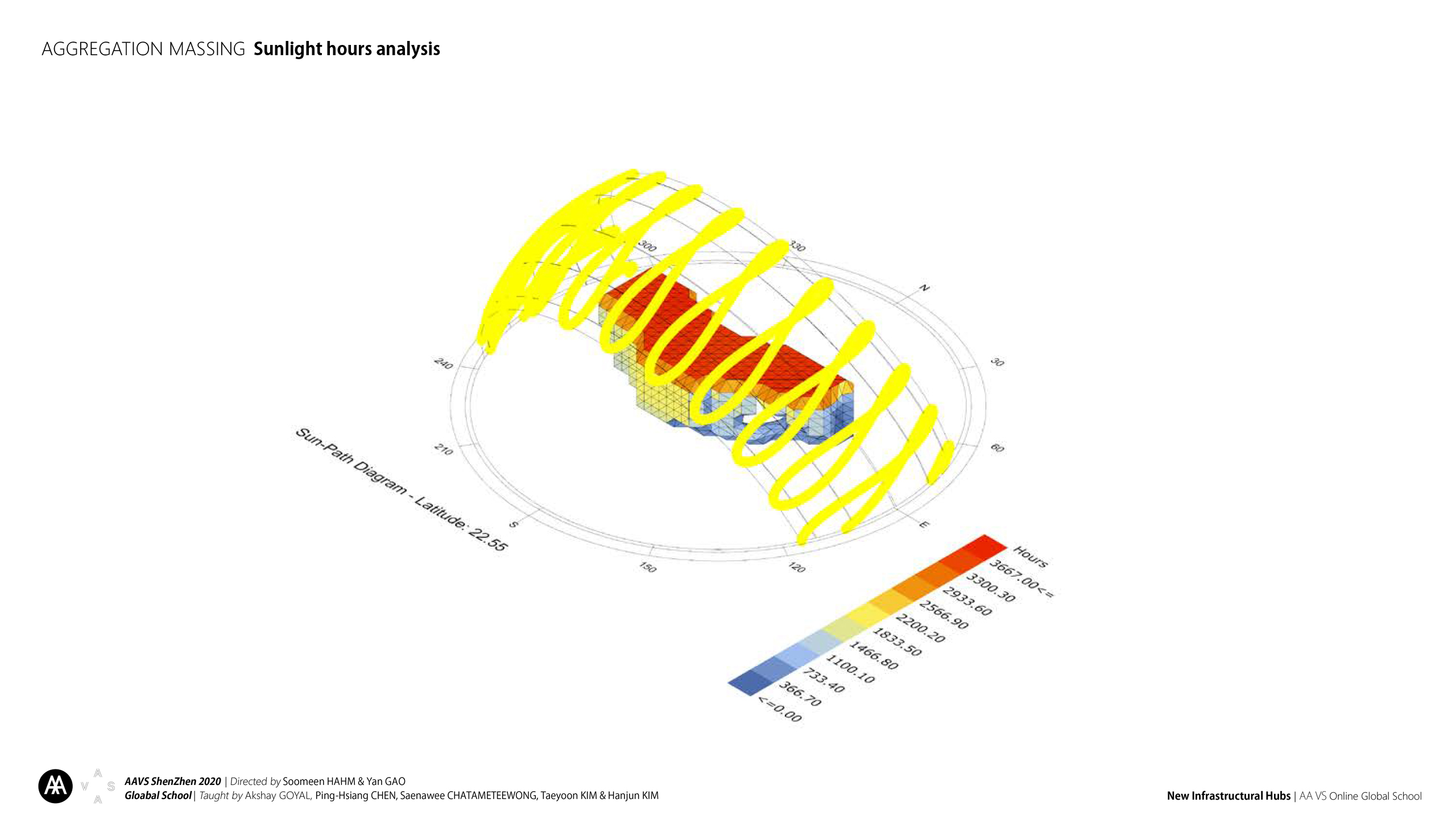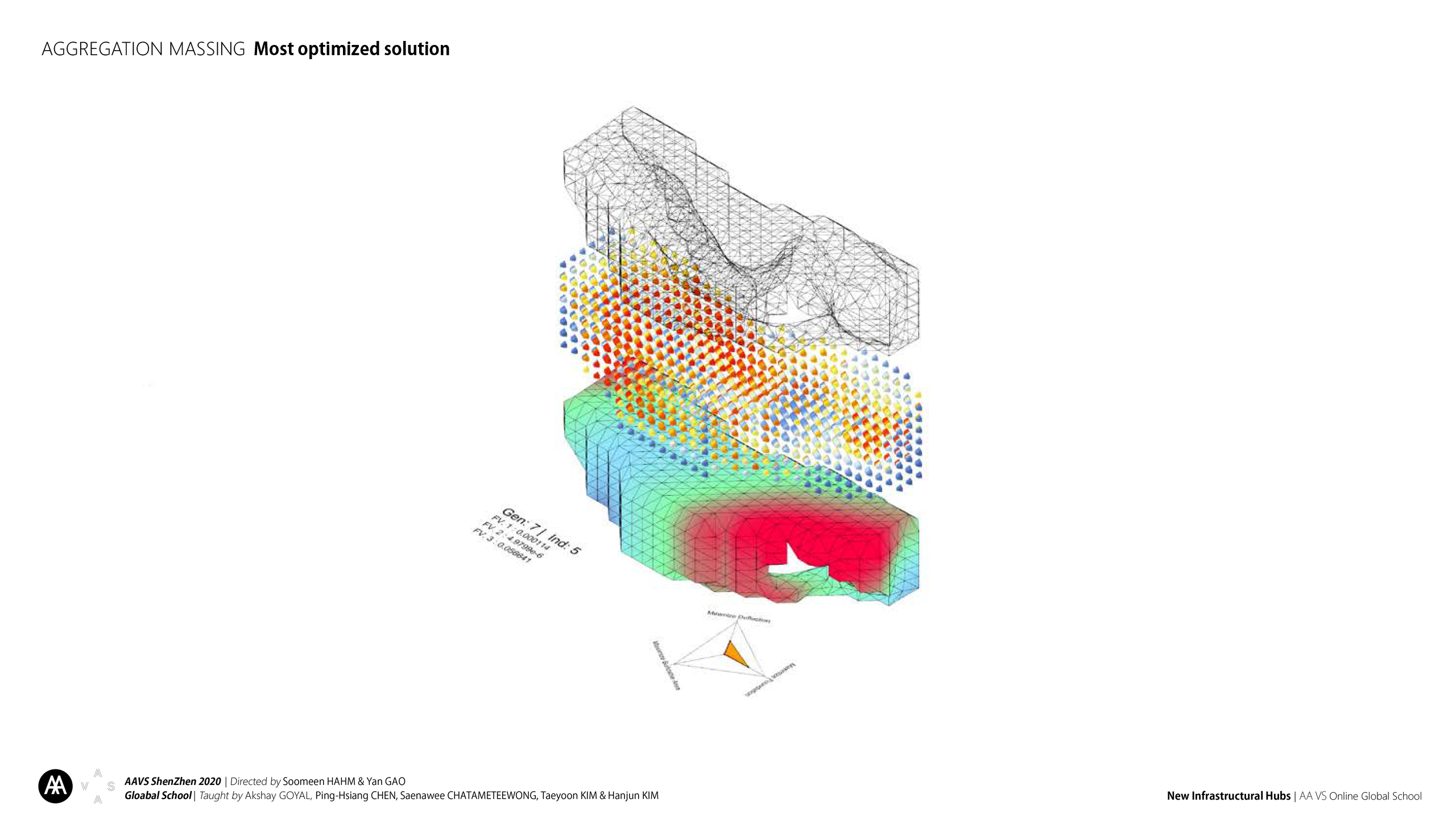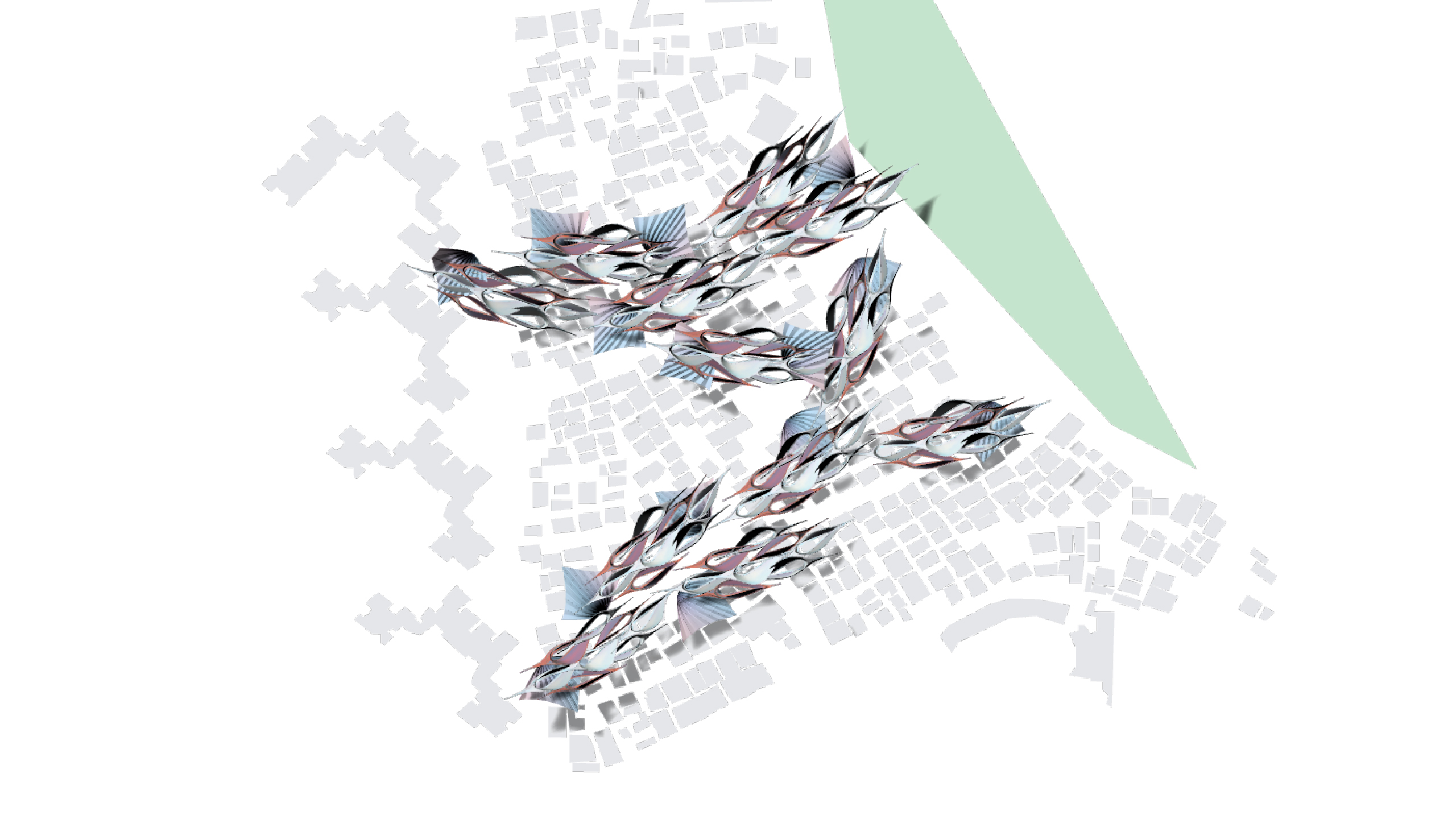NEW INFRASTRUCTURE HUB
AA Visiting School ShenZhen 2020
AAVS Shenzhen is a series workshop previously AAVS Beijing. In 2020, ran 6 consequent daily workshops by 7 faculty members, fully benefit from being online, participants were be exposed to experts of computational design from all over the world from 9 different countries.
Under the agenda – new infrastructure hub – AAVS ShenZhen investigated the application of data driven/ computational design methodologies in the design of new infrastructure hub prototypes in ShenZhen.
Program director Soomeen Hahm, Yan Gao
Instructors Akshay Goyal, Ping-Hsiang Chen, Knot Saenawee, Taeyoon Kim, Hanjun Kim
Distributed New Infrastructure Hub
AA Shenzhen Visiting School
July 2020
Background
China is promoting the national implementation of the next generation of infrastructure network, i.e. NEW INFRASTRUCTURE (新基建), which is lead by new development ideologies, driven by technology innovation, based upon information network, for high quality habitat. It is a service orientated infrastructure system characterised by digital process, intellectual upgrade and integrated innovation. The old mechanical buildings including data centers, signal towers, transmit stations, slow railways and traffic roads and so on will be replaced by Big Data Center, High Speed Railway / Vehicle Tunnels, Artificial Intelligence, Industrial Network of Things, New Energy Charging Piles, etc.. A smarter network of the new infrastructure will be more distributed, easier constructed, faster implemented, more integrated with human inhabit environment. Its physical occupancy of space and consumption of natural resources opens up a new spectrum of design opportunities in respect of the concurrent urban complexity, making it possible to create more multi-functional hubs that is particularly customised according to individual needs. Such hubs could exist in metropolis, villages or even attached to vehicles. It is not impossible to imagine the hybridisation of the New Infrastructure Hubs with the existing urban infrastructure, from as large as bridges and tunnels, to as small as Share-bicycle parking, bus stop, a light pole, or even a new breed of infrastructure that has never appeared.
Design Objective
Students are expected to design a New Infrastructure Hub (NIH) prototype as both the engineering host to new technologies and architectural proposition to indicate emerging new activities or events or anything that is meaningful for future public life. The NIH prototype is expected to be adaptable to different conditions, which could be the individual needs, the climate, the functions, the site conditions, and so on.
Design Research
Students needs to investigate the applications of New Infrastructure in reference to a particular public behaviour scenario, such as waiting, dating, chatting, way-finding, meeting, etc.. It is necessary to map the process of the design thinking with analytical diagrams and set up own design objectives. The design should address the conclusions from the analytical results and demonstrate how the design achieve individual’s objective. It is more important to present the process of the design thinking and the implementation of design techniques, such as parametric and generative modelling approaches, data-based mapping, data visualisation, digital sketch, etc.
Design Constrains
The applications of new infrastructure equipment are the only constrains for the design exercise. Students are free to decide the shape, the dimensions, the locations of the controlled volumes. It would be helpful to narrate specific scenarios as the design context, addressing who and where for what and how.
Credit
Program director Soomeen Hahm, Yan Gao
Instructors Akshay Goyal, Ping-Hsiang Chen, Knot Saenawee, Taeyoon Kim, Hanjun Kim
Team1 Amal Algamdey, Yuemeng Dai, Jiaxu Wu
Team2 Kyuseung Kyoung, Joanna Chau, Yiqi Wang
Team3 Hannah Joechl
Team4 Yanling He, Doruk Yurdayar, Shradha Supare, Zhiyan Fang
Team5 Kunal Garkhel, Elvin Aby, Mufei He, Ningwei Liu
Team6 Prabhat Arora, Chokoon Leevavong, Zixin Ye
Audit Matteo Almonti, Lujain Barri, Jinsi Xia, Han Guo, Yuxin Wu
Official website:
https://www.aaschool.ac.uk/academicprogrammes/visitingschool/cities-on-wheels-high-density-city-in-greater-bay-area
Facebook:
https://www.facebook.com/AAShenZhen
Instagram:
https://www.instagram.com/sd_platform/
Youtube:
https://www.youtube.com/watch?v=bPYwsdnmdTk&list=PLZ55wFj-13MQjnCIHac1lerTJJFZJafKo
Autogenerate
Project “Autogenerate” proposed a unit based assembly system for urban intervention. The automated landing stations can serve as self-efficient living units that can be moved everywhere around Shenzhen. By using different clusters, they will form a micro complex that will contain various functions; including shops, city living rooms, command rooms, small workshops, etc.
Urban Cluster Farming
Project “Urban Cluster Farming” proposed a automated robotic multi-story hydroponic farming system as the urban intervention. The assembly of the building is evolving over time by autonomously moving robots.
Public Programs
The program also consisted of inspiring keynote lectures, all streamed live on the youtube channel.
Student projects
Project portfolios
VS Intro

